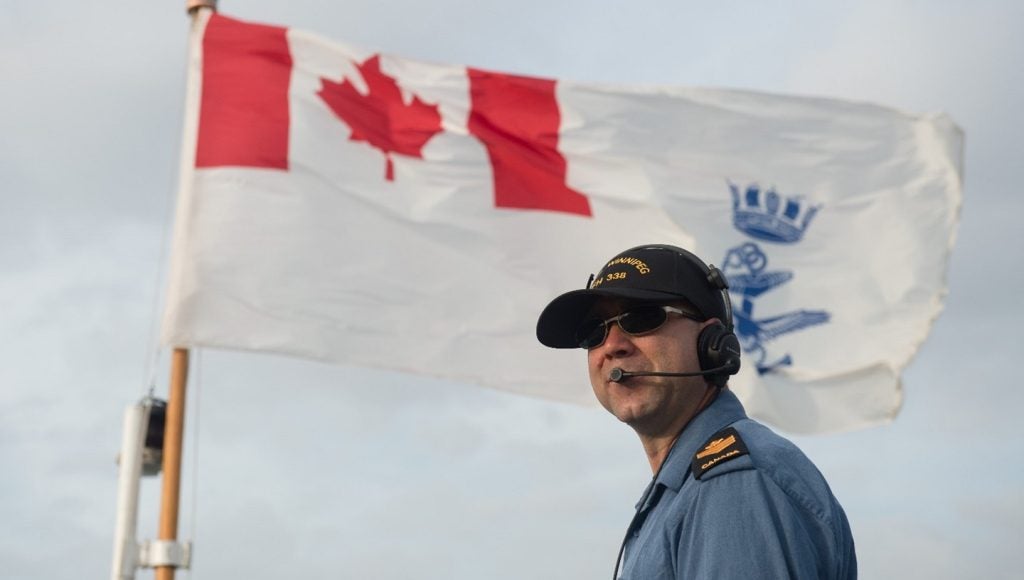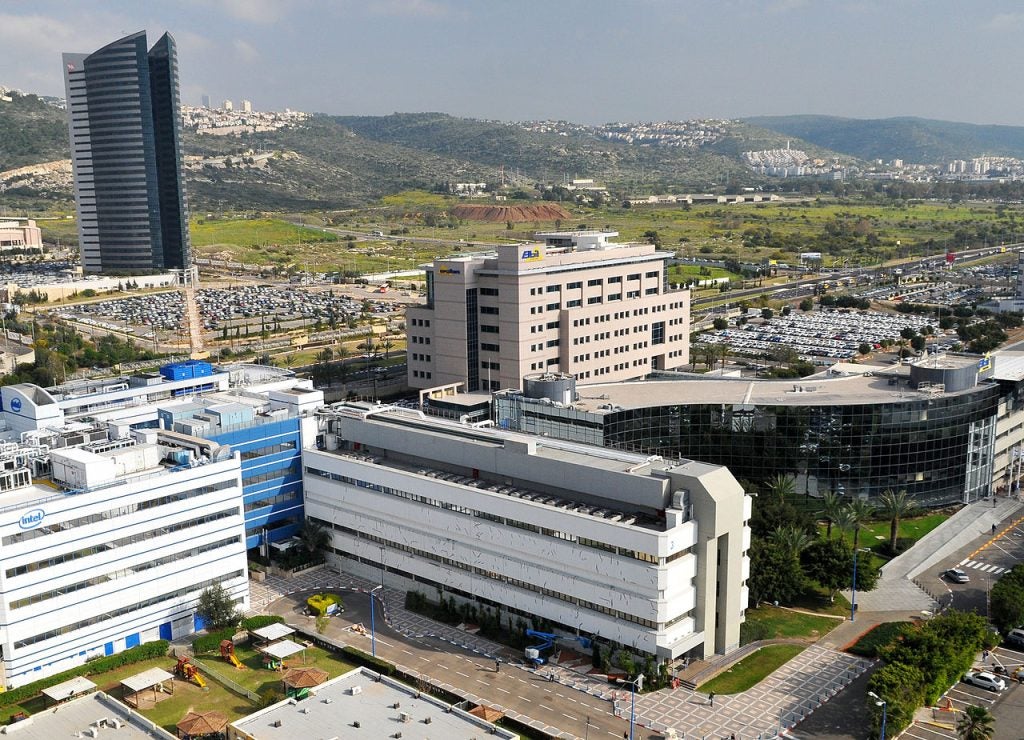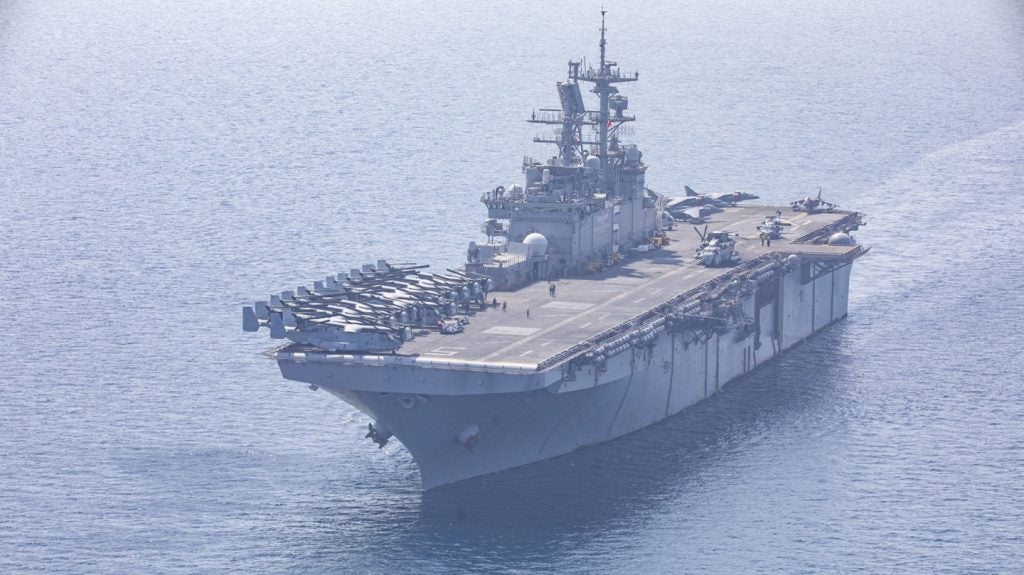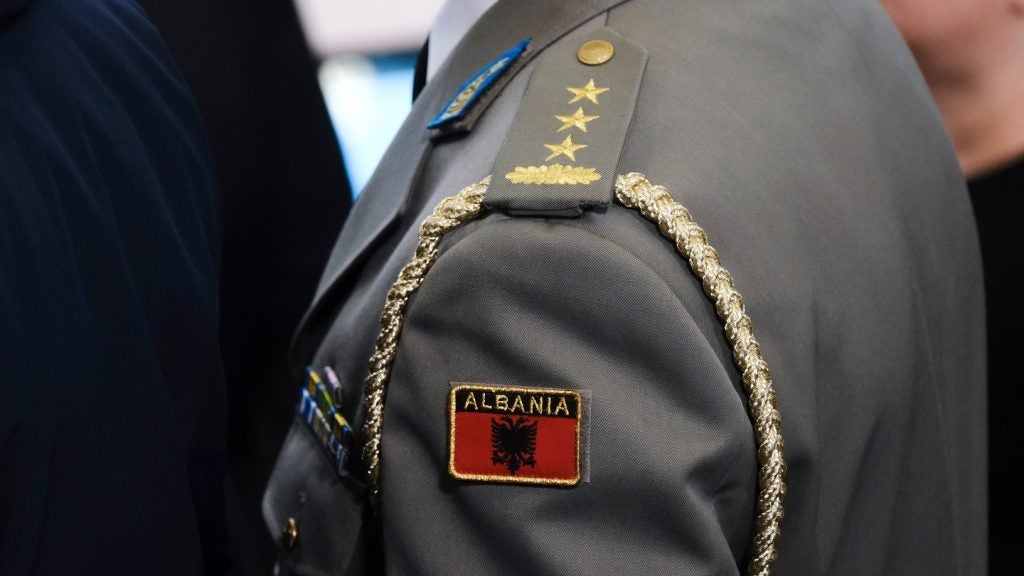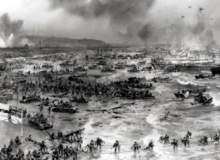
The largest and most accurate offshore mapping of the five D-Day beaches was completed earlier this year. The project covered an enormous 511km² area in just 27 days with modern sonar equipment. It is hoped the survey of wreckages will assist the Normandy region in obtaining the designation of UNESCO World Heritage Site in the future.
A key contributor to the project was the UK Hydrographic Office (UKHO), which sent two of its senior staff to France to assist. UKHO team manager Chris Howlett was a key on-site advisor when the project entered its second phase, which involved the identification of the wrecks.
To read about Chris’s experience while on the expedition and more, click here for our Q&A. Here, alongside incredible pictures, he tells naval-technology.com the story of the wrecks that still sit silently beneath the Normandy waves.*
Three M-7 Priest self propelled guns lying off Omaha beach
How well do you really know your competitors?
Access the most comprehensive Company Profiles on the market, powered by GlobalData. Save hours of research. Gain competitive edge.

Thank you!
Your download email will arrive shortly
Not ready to buy yet? Download a free sample
We are confident about the unique quality of our Company Profiles. However, we want you to make the most beneficial decision for your business, so we offer a free sample that you can download by submitting the below form
By GlobalData
“One of the Priests is upside down while the other two are the correct way up and slightly overlapping each other. The 0.5 inch machine gun ring or ‘pulpit’ from which the M-7 obtained the name Priest can be seen clearly as a red ring on the central wreck. The pulpit on the nearest Priest has corroded away. Barely visible below the inverted Priest are two wheels. These belong to the ammunition trailer towed by each Priest. Not visible in this shot are several other trailer axles and the remains of a Jeep.”
Liberty ship ‘Charles W Eliot’

“The badly dispersed wreck of the Liberty ship ‘Charles W Eliot’ that struck a mine on 27 June while starting her return journey from Juno beach to the UK. With the crew having abandoned the hulk rescue tugs were attempting to tow her to England when the Luftwaffe bombed and sank her. Very little remains that is identifiable apart from the large and jumbled debris field. Again whether this is the result of 70 years underwater in a high energy tidal regime or the work of post WWII wreck dispersal activities (or both) is unknown.”
HMS Magic

“The wreck of the RN ‘Auk’ class minesweeper HMS Magic sunk on 6 July 1944 by a German human torpedo from Le Havre. At the time of her loss HMS Magic was part of the ‘Trout’ defensive line whereby each night minor warships anchored in a line astern at the eastern end of the Normandy beaches. This line was intended to prevent German forces from the still uncaptured fortress of Le Havre penetrating into the beach area and the many merchant ships discharging there. The tactic was largely successful but at a heavy price to the vessels manning the Trout line. The image shows HMS Magic lying on her starboard side, bow to the top.”
A partial ‘whale’ tow

“Whale was the code name for the pierheads and floating bridges to be used as part of the Mulberry Harbours. The floating roadways were made of 80 foot steel bridge sections supported on either steel or concrete floats called ‘beetles’. The image shows three concrete beetles with the remains of the bridges in between. The concrete beetles were not very seaworthy and many tows sank while being brought from UK to Normandy. Normally tows comprised 6 bridge spans supported by 6 beetles and a floatation tank but where the rest of this tow is remains unknown.”
HMS Durban

“Although recorded as HMS Durban, and being roughly the correct dimensions this barely visible wreck is a bit of a mystery. HMS Durban was expended as a blockship to form a breakwater off Ouistreham and it any wreckage remains it should lay there. This wreck is much further out to sea so is either not HMS Durban or the wreck was moved after the breakwater was no longer needed.”
HMS Pylades

“The wreck of the Auk-class minesweeper HMS Pylades sunk by a German midget submarine during the night of 8 July 1944 while anchored as part of the Trout defensive line (see HMS Magic above). The wreck is lying on its port side with the bow to the top. The ship’s superstructure is still clearly evident to the left while the partly upturned hull forms the shallowest part of the image.”
US DD Sherman tank

“An underwater photo of a US DD Sherman lying off Omaha beach. The DD Shermans were a modification of the classic Sherman tank to allow them to swim. They were fitted with twin propellers for propulsion while afloat and had a canvas floatation screen fitted to the hull. The intention was to launch the tanks which would swim ashore and be able to provide close support to the troops in the first wave. Unfortunately on D-Day the waves were too high and many DDs destined for Omaha were swamped and sank while still well off shore. On other beaches the commanders realised the danger and brought their DDs much closer inshore before launching allowing them to reach the shore.”
German U-Boat U390

“The wreck of U390 sunk on 5 July 1944 by HMS Tavy and HMS Wanderer using the hedgehog forward firing mortar. Only 1 member of the U-Boat survived. U-390 was a snorkel fitted type VIIC boat and was on her third war patrol at the time of her loss. In the image the bow is to the top with the propellers and rudders clearly visible at the stern. The conning tower can just be made out to the right as is the port side ballast tank (the bulge on the central hull). Whether the damage to this is a result of the attack or subsequent corrosion is not known.”
*All photos and images are reproduced with the permission of MC4/LCL Production
Follow Grant Turnbull on Google+


.gif)

